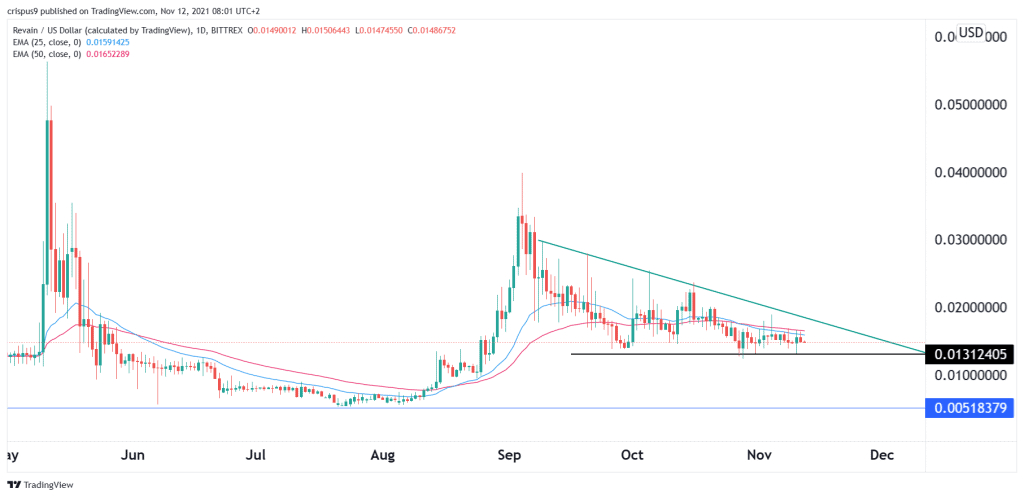- Summary:
- The Revain price has lost momentum in the past few months. We explain why the REV price could crash by about 65%
The Revain price has lost momentum in the past few months. After surging to a high of $0.0563 in May, the coin has crashed by more than 73%. Its attempts to recover faced significant resistance at $0.040. It is now trading at $0.014, giving it a market cap of more than $1.2 billion.
What is the future of Revain?
Revain is a blockchain project that is aiming to disrupt the reviews industry. The platform uses a dual-token model, with REV being its flagship. It also operates the RVN token.
The company’s model is relatively simple. It simply allows users from around the world to leave reviews on both physical and online platforms. It then uses artificial intelligence to weed out non-genuine reviews. People are incentivized to leave reviews by receiving the company’s tokens.
Revain faces a tough challenge going forward. In my experience, I have found out that most platforms don’t have reviews. Those who have the most are platforms like Binance and Coinbase.
At the same time, Revain is competing with giants in the industry. Some of the biggest players in the rating and reviews industry are Google, Amazon, Yelp, and TrustPilot. In the past few years, these companies have invested significant resources to ensure that reviews in their platforms are genuine.
Therefore, in my view, and from a fundamental perspective, I believe that Revain has a difficult path to climb in the long term.
Revain price prediction
The daily chart shows that the Revain price has found a strong support $0.013. It has struggled to move below this support several times before. At the same time, the coin has formed a descending triangle pattern that is shown in red. This triangle is usually a bearish sign. The coin has moved below the 25-day and 50-day moving average.
Therefore, there is a likelihood that the pair will break out lower. If this happens, the next key support level to watch will be at $0.005. This will be about 65% below the current level.



